Are you confused about which cut of beef to choose for your next pot roast or slow cooker recipe? Choosing between a shoulder roast and a chuck roast can be difficult, as they both provide tender, flavorful meat perfect for long, slow cooking methods. Both cuts come from the front shoulder of the cow and have similar marbling and fat content, but there are some key differences to keep in mind.
In this article, we will explore the differences between shoulder roast vs chuck roast and offer tips on cooking each cut to perfection. So if you’re ready to up your pot roast game, keep reading!
What is Shoulder Roast?
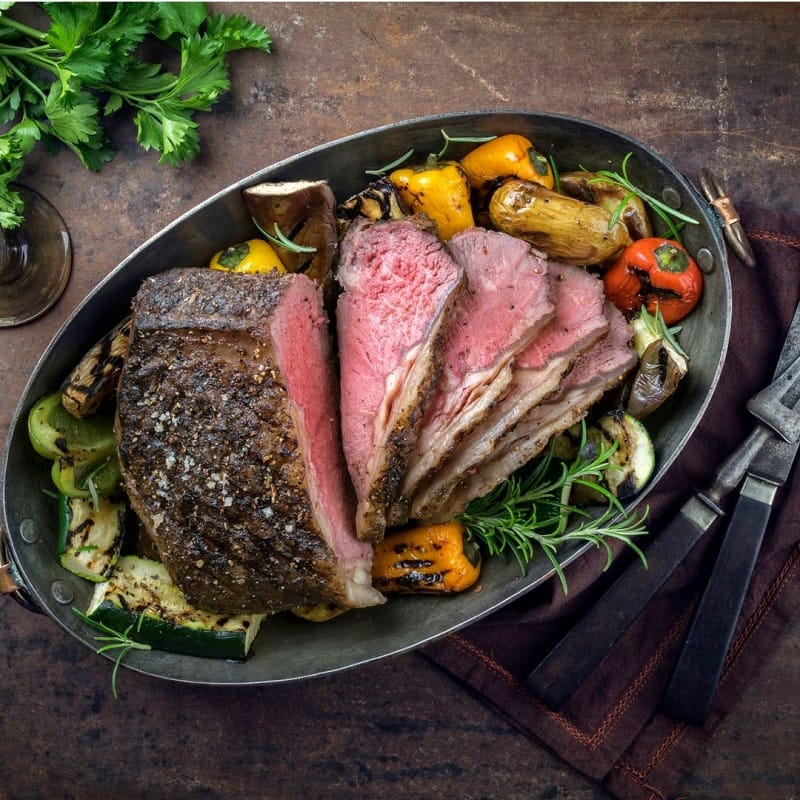
If you’re a fan of slow cooking, the shoulder roast is your perfect cut of meat. It’s a juicy, flavorful cut of beef that is perfect for a long braise or stew.
The shoulder roast comes from the shoulder of the cow, which is located just above the ribs and front leg. This cut of meat is generally tougher than other cuts of beef, so it requires low, slow cooking. That’s why it’s so great for braises and stews. The tough muscle fibers break down during a long, slow cooking process, resulting in tender, juicy meat.
The shoulder roast is nexcellent for pot roasts, stews, and braises. It’s also great for slow-cooking in the crockpot. The slow-cooking process helps to tenderize the meat and infuse it with flavor. The long cooking time also makes the flavorful gravy or sauce nice and thick.
When shopping for a shoulder roast, look for one with a lot of marbling. Marbling is the small, white streaks that run through the meat. The marbling will help to keep the roast moist and tender during the slow cooking process.
What is Chuck Roast?
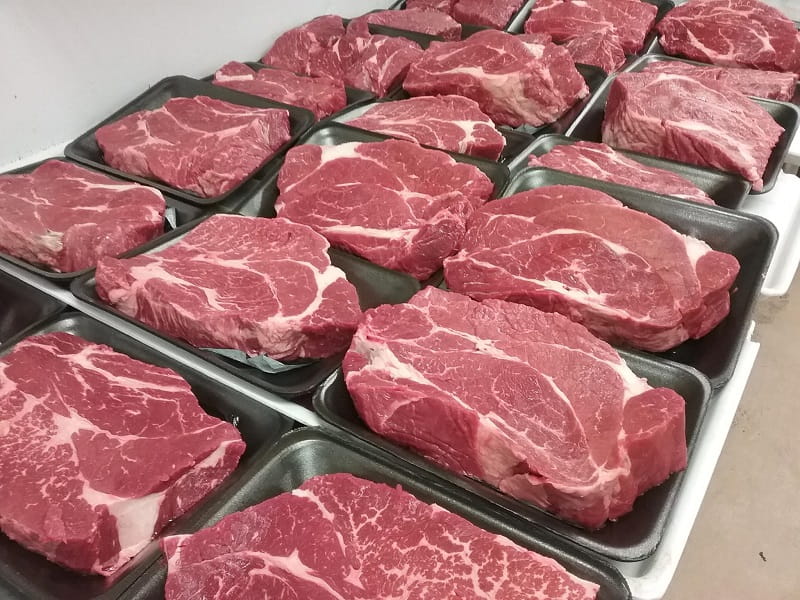
If you’re a fan of slow cooking, then you’ve probably heard of chuck roast. This cut of beef is known for its flavor and tenderness when cooked low and slow. It’s an excellent cut for pot roasts and slow-cooked dishes, and it’s perfect for meals that require a lot of time and patience.
So what is a chuck roast, exactly? It’s a cut of beef that comes from the shoulder of the cow. It’s a tough cut loaded with connective tissues and flavorful fat. This makes it an ideal choice for slow-cooking methods, as the long cooking time breaks down the tough tissues and fat, creating a flavorful and tender roast.
Since the chuck roast comes from the shoulder of the cow, it’s not as tender as cuts from the rib or loin. This means it usually requires a longer cooking time to break down the tough tissues and fat and create a tender, juicy roast. The long cooking time also allows the flavors to develop and concentrate, making it a great choice for pot roasts and other slow-cooked dishes.
When shopping for a chuck roast, look for a piece well-marbled with fat. This will ensure that the roast is flavorful and juicy when cooked. Since the roast will shrink during cooking, buy enough to serve your family.
Shoulder Roast And Chuck Roast: What’re The Similarities

Shoulder roast and chuck roast are two popular cuts of beef that often appear together on menus and grocery store aisles. But what are the similarities between these two cuts of beef? To answer that question, we’ll look at a cow’s anatomy and compare the characteristics of shoulder and chuck roasts.
The shoulder roast comes from the shoulder joint of the cow, specifically the shoulder blade and shoulder clod. It is typically cut into the chuck eye roast and the top blade roast. The chuck eye roast is a leaner cut with a slightly tougher texture, while the full-blade roast is more tender and juicy.
The chuck roast, on the other hand, comes from the neck and shoulder area of the cow, including the chuck and shoulder blades. It is usually cut into the chuck roast and the top blade roast. The chuck roast is a more marbled cut with a richer and more intense beefy flavor. On the other hand, the whole blade roast is a leaner cut with a slightly tougher texture.
When it comes to similarities between shoulder and chuck roasts, some are quite obvious. Both cuts come from the shoulder and neck area of the cow, have a marbled texture, and are usually cut into two sections. The main difference, however, lies in the flavor and texture. While the chuck roast is a much more marbled cut, with a richer and more intense beefy flavor, the shoulder roast is leaner, with a slightly tougher texture.
What Is The Difference Between Shoulder Roast vs Chuck Roast?
Shoulder roast and chuck roast come from a cow’s shoulder section, but the main difference lies in their texture and flavor. Shoulder roast meat is leaner, more tender, and smaller than the thick and exercised muscles surrounding the chuck roast, making it tougher. While the shoulder roast takes less cooking time, the chuck roast requires slower cooking to achieve the same tender and juicy outcome. If you’re looking for a flavorful and juicy cut, then the chuck roast is your go-to beef cut, but if you prefer a leaner and tender roast, then the shoulder roast is a perfect choice.
We’ll look at the differences between the two cuts so you can make an informed decision when deciding which is suitable for your meal.
Location
The first difference between shoulder and chuck roast is their location on the cow. Shoulder roast comes from the chuck, or shoulder, area of the cow. This area is often referred to as the “underarm,” and it is located between the neck and the foreshank. On the other hand, Chuck roast comes from the chuck section, which is located further down the cow’s body towards the rib and brisket areas.
Marbling
The second difference between shoulder roast and chuck roast lies in their marbling. Marbling is the amount of fat interspersed within the meat’s muscle fibers. Shoulder roast has moderate marbling, meaning there is a good amount of fat within the muscle but not enough to make the meat overly fatty and greasy. Chuck roast, however, has a much higher degree of marbling, giving it a richer, more tender texture.
Chuck Roast vs. Shoulder Roast: Texture
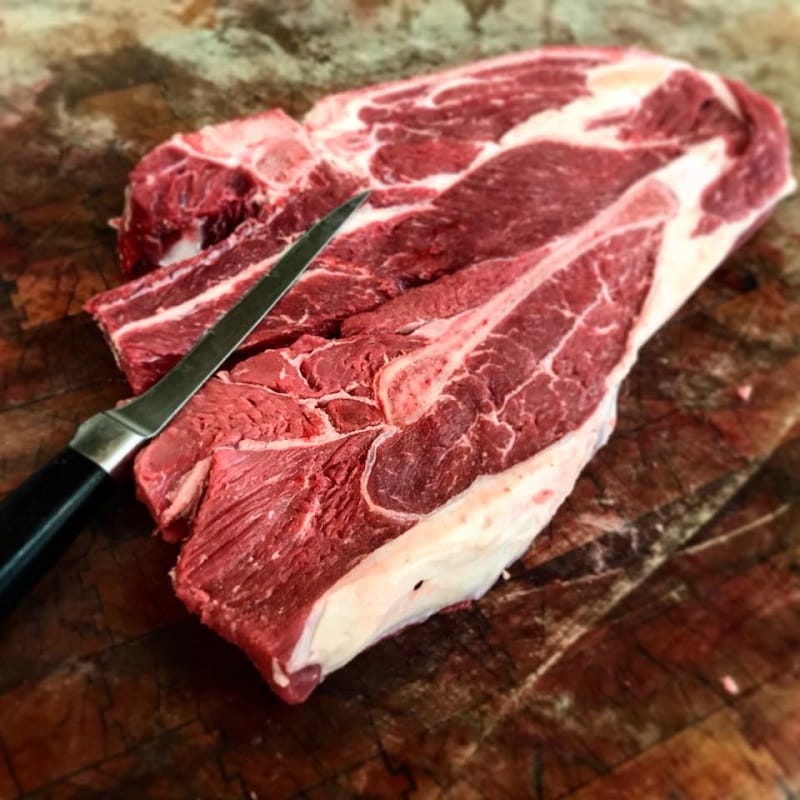
The third difference between shoulder roast and chuck roast is the texture of the meat. Because of the marbling, the chuck roast has a significantly more tender texture than the shoulder roast. Chuck roast can easily be shredded with a fork, while shoulder roast requires more effort to break apart.
Flavor
Finally, the flavor of the two cuts is also quite different. Chuck roast has a richer flavor because of its higher fat content, while shoulder roast has a milder, less fatty taste. Both cuts of beef will have excellent flavor when cooked correctly, but if you’re looking for a flavorful, juicy steak, chuck roast is the way to go.
Fat Content
Regarding fat content, shoulder roasts typically have more fat than chuck roasts. This is due to the fact that the shoulder area has more insulation from the outside environment. As a result, the fat content in a shoulder roast is generally higher than that of a chuck roast.
Shoulder Roast Vs Chuck Roast: Calories
A shoulder roast typically has more calories than a chuck roast, with an average of 160 calories per serving. On the other hand, a chuck roast has about 100 calories per serving. However, it’s important to remember that these figures can fluctuate depending on the specific cut of the roast.
Preparation
When it comes to preparation, shoulder roasts are typically simmered with low heat to allow the flavor to develop. This differs from chuck roasts, usually cooked quickly with high heat. Chuck roasts also tend to contain connective tissue, which requires long, slow cooking to be tender.
Is Pastrami Or Roast Beef Easier To Cook?
Pastrami and roast beef both require different cooking methods. For example, the pastrami is typically cooked in a water bath with a brine, while roast beef is cooked in an oven. Pastrami would be a better option if you’re looking for something easy to cook.
Usage
Pastrami and roast beef can both be used for a variety of dishes. Pastrami is commonly used for sandwiches, while roast beef is often used for roasts, sandwiches, and tacos. Both cuts of beef can be used to make delicious meals, so it’s really up to personal preference and what kind of dish you’d like to make.
Price
The price of pastrami and roast beef will vary depending on the cut and the store you purchase it from. Generally, the pastrami is more expensive than roast beef, but the price can vary from store to store.
Which One Is More Popular In American Cuisine?
Both pastrami and roast beef are popular in American cuisine. Pastrami is often used for sandwiches, while roast beef is usually used for roasts, sandwiches, and tacos. Both cuts of beef are delicious and can be used for various dishes, so it’s really up to personal preference.
Which Is Better, Shoulder Roast or Chuck Roast?
The debate between shoulder roast and chuck roast is consistently ongoing. Both cuts of beef have their unique characteristics and flavors. The shoulder roast is a leaner cut of meat and is usually more tender, while the chuck roast is a fattier cut of beef and is usually more flavorful. Ultimately, it’s up to personal preference which beef you prefer.
Read more:
How To Select The Best Shoulder Roast Or Chuck Roast At The Grocery Store?
When shopping for a shoulder roast or chuck roast, you will want to look for a cut of meat with good marbling, which is the amount of fat running through the muscle. The more marbling, the juicier and more flavorful your dish will be. You will also want to look for a cut that is leaner than the rib or loin cuts but still has some fat for flavor.
When selecting your shoulder roast or chuck roast, be sure to examine the size of the roast. Generally, larger roasts will be more tender. If you want a leaner cut, look for a smaller roast. You want to ensure enough fat to keep the roast moist during cooking.
Next, you will want to consider the texture of the roast. You will want to select a tender and not too chewy roast. You can usually tell by pressing your thumb into the meat. If it is firm and resistant to your finger, it is a good indication that it is tender.
Finally, consider the price of the shoulder roast or chuck roast. Generally, the more expensive cuts will be more tender and flavorful. However, the cheaper cuts can still be flavorful and juicy if cooked correctly.
Tips For Seasoning And Marinating Shoulder Roast And Chuck Roast
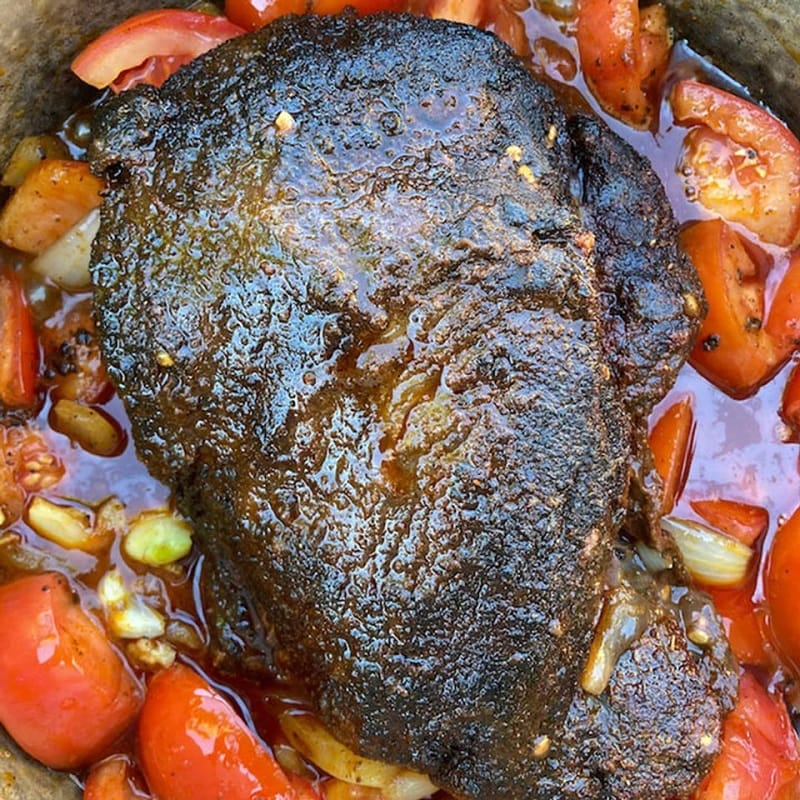
First, make sure to use the right type of seasoning. Try a simple blend of salt, pepper, and garlic powder when looking for a good base for both shoulder and chuck roast. This combination will create a nice level of flavor that will complement the taste of the beef. Other seasonings, such as herbs, spices, or even cheese, can also be used to add extra depth and complexity to the flavor profile.
Once the seasoning has been applied, it’s time to move on to the marinating process. A marinade typically consists of oil, an acid such as vinegar or lemon juice, and various seasonings. When it comes to shoulder and chuck roast, the marinade should be kept relatively light. The beef will be cooked slowly, so adding too much intensity to the marinade can make the final dish too salty or sour.
When marinating the beef, leaving it for at least 8 hours is important. This will allow the flavor profile to penetrate the beef and add an extra layer of flavor. If the marinade is too thick, you can dilute it with water to make it easier to work with.
Once the marinating is complete, it’s time to cook the shoulder and chuck roast. When cooking low and slow, it’s important not to let the meat dry out. To avoid this, baste the meat with some of the marinades every 30 minutes or so. This will help keep the beef moist and flavorful.
Common Mistakes To Avoid When Cooking Shoulder Roast And Chuck Roast
Cooking a roast is a great way to feed a crowd, but you should avoid a few common mistakes when cooking shoulder roast and chuck roast. The key to success is to remember that these cuts are both tougher cuts of meat, so you must be extra careful when preparing them. Here are some common mistakes to avoid when cooking shoulder roast and chuck roast.
- Not Trimming the Fat: The fat on both shoulder roast and chuck roast can add flavor to the meat, but it can also make it tough if it’s not trimmed properly. Make sure to trim away large chunks of fat and remove any sinews that may be present. Doing this will help the roast cook more evenly and become more tender.
- Not Brining the Meat: Brining is an essential step for tenderizing tougher cuts of meat. It helps to break down the muscle fibers and make the meat more tender. Bringing the meat for at least four hours – overnight is even better. This will help ensure that the meat is as tender as possible.
- Not Marinating the Meat: Marinating the meat with a flavorful liquid like beer or wine helps to add flavor and tenderize the meat. Marinate the roast for at least two hours, but overnight is best. This will help to ensure the roast’s flavor and tenderness.
- Not Sealing in the Juices: Sealing in the juices is essential when cooking shoulder roast and chuck roast. Use a high-heat sealant to ensure your roast is sealed correctly. This will also help to ensure that the roast doesn’t dry out while cooking.
- Overcooking the Meat: Overcooking the roast can make the meat tough and dry, so follow the cooking time on the recipe and use a meat thermometer to check the roast’s internal temperature. The roast should reach an internal temperature of 165 degrees Fahrenheit.
How To Properly Store Shoulder Roast And Chuck Roast?
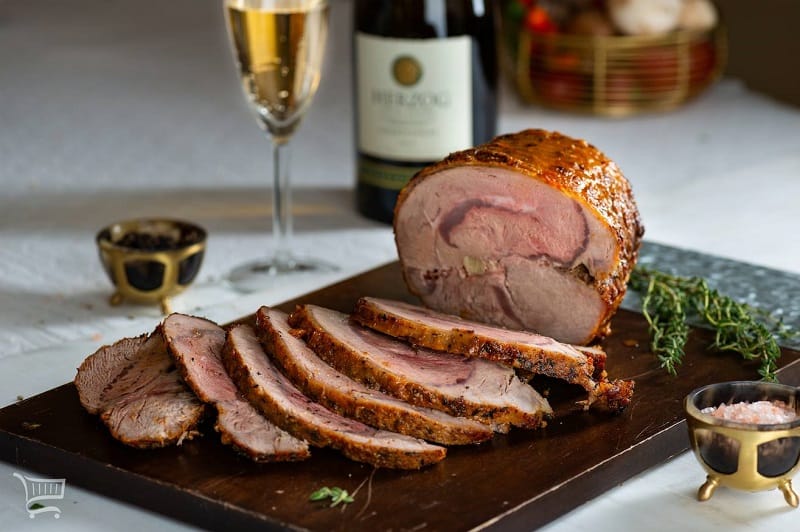
Wrap them tightly in plastic or airtight containers when storing frozen shoulder roast and chuck roast. This will keep the moisture in, preserving the flavor and texture of the meat. It’s also best practice to freeze the meat in the tiniest portion possible. This will help minimize the time the heart needs to be unfrozen, allowing it to retain its flavor and texture.
If you’re looking for a longer-term storage solution, vacuum-sealed bags or jars are a great option. Vacuum-sealing will remove the air from the container and help create an airtight seal, preserving the flavor and texture of the meat for a longer period.
No matter how you store your shoulder roast and chuck roast, keeping it out of direct sunlight and away from heat will help preserve its freshness. Additionally, using the meat within the recommended time frame (generally up to 6 months) is important to ensure the best quality and safety.
How To Cook Shoulder Roast?
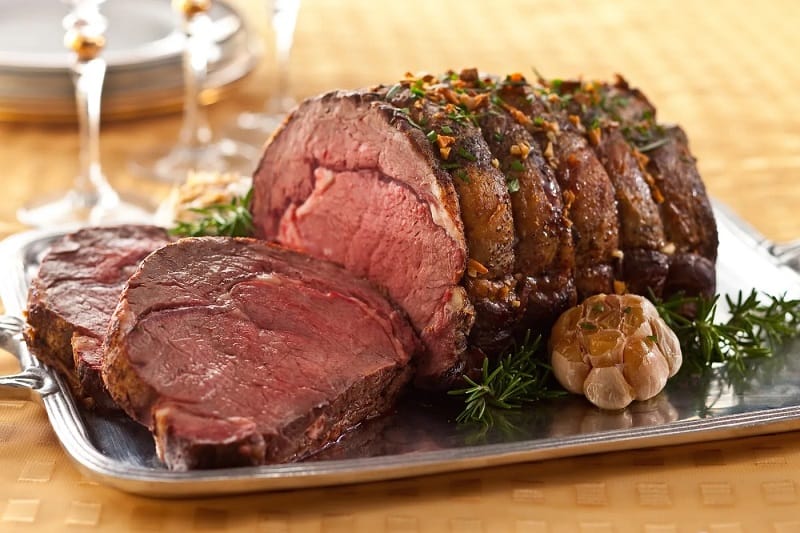
Cooking a shoulder roast is a great way to enjoy a delicious and satisfying meal. It can take a bit of time to prepare, but the results are worth it. Whether cooking for a special occasion or a cozy dinner at home, this recipe will help you make a delicious roast that your family and friends will love.
First, you’ll need to select the right cut of meat. The shoulder roast is best when it’s slow-cooked, so look for one with a lot of marbling and fat. This will help the roast become tender and juicy as it cooks.
Preheat your oven to 350 degrees Fahrenheit when you’re ready to begin. Place the roast onto a roasting pan and season it generously with salt, pepper, and other herbs and spices to taste. Once seasoned, place it into the oven and cook for two hours.
Once the two hours are up, take the roast out and reduce the oven temperature to 300 degrees Fahrenheit. Rub the roast with butter or oil, return it to the oven, and cook for two more hours. Add some liquid, such as broth, wine, or beer, to the pan for even juicier results.
After the total cooking time of four hours, remove the roast from the oven and let it rest for about 15 minutes. This will help the juices redistribute and make the roast even more tender. When ready to serve, carve the roast into slices and serve with your favorite sides.
How To Cook Chuck Roast
To get started, the first step is to prepare the chuck roast. Begin by seasoning the meat with salt and pepper. Add other spices and herbs as desired for an extra layer of flavor. Once the roast is seasoned, it’s time to start cooking.
If you’re using a slow cooker, place the roast in the slow cooker and add enough beef broth or water to cover the roast barely. Then, add desired seasonings and vegetables such as onions, carrots, and celery. Cook the roast on low for 8-10 hours or until the internal temperature reaches 145 degrees Fahrenheit.
Preheat the oven to 250 degrees Fahrenheit if you’re using an oven. Place the chuck roast in a roasting pan and season with salt, pepper, and other desired seasonings. Add beef broth or water to the pan to be about ½ inch deep. Then, cover the pan tightly with foil and roast for 3-4 hours or until the internal temperature reaches 145 degrees Fahrenheit.
Finally, if you’re using a pressure cooker, place the chuck roast inside and add enough beef broth or water to cover it. Add desired seasonings, vegetables, and other ingredients. Seal the lid and cook on high pressure for 45 minutes. Let the pressure release naturally for 15 minutes before opening the lid.
FAQs About Shoulder Roast Vs Chuck Roast
Is It Better To Cook A Chuck Roast In The Oven Or A Slow Cooker?
While both methods have advantages, an oven provides a slightly more controlled environment. The thermostat’s temperature control is more precise, and the distance between the heat source and the roast can be adjusted as needed. However, slow cooking in a crockpot provides a convenient and low-maintenance way to cook a delicious and tender roast.
Regardless of the method, it is essential to season and sears the meat before cooking for the best result. Choosing the right cooking method depends on personal preference and the time available, but both methods can lead to a mouthwatering and satisfying meal.
Can A Chuck Roast Be Used In Place Of A Shoulder Roast In Recipes?
If you’re wondering whether a chuck roast can be used in place of a shoulder roast in recipes, the answer is yes, you can! While both cuts of beef come from the shoulder area, the shoulder roast is typically more tender and leaner than the chuck roast.
However, if you can’t find a shoulder roast or prefer the flavor of chuck roast, it can work as a substitute. Remember that chuck roasts are much leaner and may require additional seasoning or moisture to prevent drying out during cooking. With the right recipe and cooking method, a chuck roast can become the star of your meal, just like a shoulder roast would.
Are There Any Specific Seasonings Or Marinades That Work Well With Shoulder Roast And Chuck Roast?
Factual suggests that a blend of thyme, parsley, oregano, and brown sugar can create earthy flavors that enhance the taste of both shoulder and chuck roast. For those looking to spice things up, adding red pepper and Cajun seasoning to a beef shoulder roast with vegetables can take this family favorite to the next level.
Additionally, whisking in granulated garlic and smoked paprika can offer a smoky flavor to the dish. It’s important to remember that the quality of the meat also matters, so picking a tender and juicy rump roast or top sirloin roast can significantly impact the overall taste.
How Does The Cooking Time Differ Between A Bone-In And Boneless Shoulder Roast?
Cooking a roast with the bone in yields a more flavorful dish, but does it affect the cooking time? The typical rule is to allow 30 to 35 minutes per pound of roast if cooking bone-in or boneless.
However, factors such as the type of meat and the cooking method may influence the cooking time. For a bone-in beef shoulder roast, the approximate total cooking time for a rare medium cook ranges from 1-1/2 to 1-3/4 hours, while a medium cook requires 1-3/4 to 2 hours of cook time. On the other hand, a boneless shoulder roll (butt) weighing 2 to 4 lbs requires 35 to 40 minutes per pound of cooking.
While some cooks argue that having a bone doesn’t change the cooking time significantly, the bone-in option is still popular for achieving better flavor. However, if time is a concern, boneless chicken pieces are the better option as they tend to cook faster.
Can Either Shoulder Roast Or Chuck Roast Be Frozen For Later Use?
The answer is yes, you absolutely can! Both cuts of beef are delicious and versatile, making them perfect for various recipes. Properly stored, they can maintain their best quality for 6 to 12 months. However, to ensure the best flavor and texture, it’s recommended to use uncooked roasts within four to 12 months of freezing.
Frozen beef is a great way to save money by buying in bulk and using it in future dishes. So go ahead and stock up on those roasts – you’ll have delicious meals at your fingertips whenever you need them!
Can A Shoulder Roast Be Used For Pulled Pork?
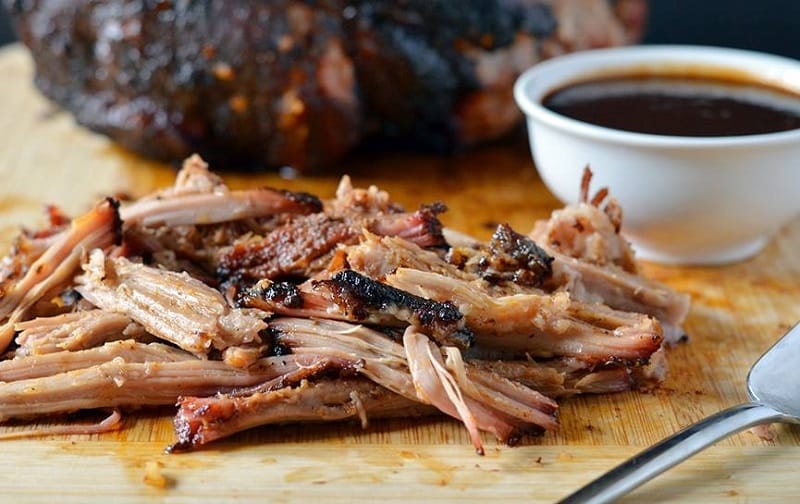
If you’re planning to make pulled pork, a pork shoulder roast is the ideal meat cut. This versatile cut of pork is sometimes called pork butt or Boston butt, and you can buy it boneless or bone-in. While both types will work well for pulled pork, many prefer the convenience of a boneless roast. The meat should be cooked for two to four hours until it’s fork-tender and left undisturbed for the first two hours. From then on, check it every half hour. The pork shoulder’s fat content is just right for yielding the tender meat necessary for making delicious pulled pork, which makes it the perfect choice for this classic dish.
Conclusion
In conclusion, the shoulder roast vs chuck roast debate is age-old. Both cuts have advantages and disadvantages; the cut you choose should depend on the dish you plan to make. The shoulder roast is generally a tougher cut of meat, but it is also much more flavourful, making it ideal for slow cooking. The chuck roast, on the other hand, is more tender and can be cooked much faster. Ultimately, the choice is yours and should depend on the type of dish you plan to make. The shoulder and chuck roast will be delicious no matter which cut you choose.
References:
- https://www.foodsafety.gov/food-safety-charts/meat-poultry-charts
- https://www.stilltasty.com/fooditems/index/16496
- https://www.ehow.com/way_5251618_boneless-shoulder-roast-cooking-times.html

Hey readers! Chip Holland here, and I’m a Manager of this website. My passion for writing about it only matches my passion for BBQ. Follow my blog for mouth-watering recipes, tips, and tricks for the perfect smoke, grill, and BBQ. I’m sure you won’t be disappointed!
